VOLCANO SUMMIT: CLIMBING TAHOMA (MT. RAINIER) IN WASHINGTON STATE
WRITTEN BY PARADISE AMBASSADOR KEVIN DOHERTY-REGALIA - Origonally posted on paradiseskis.com
On most bluebird days in downtown Seattle, the wandering eye would quickly draw you to the 14,411-foot tall stratovolcano that stands roughly 60 miles from the city limits. Residing on the lands of the Coast Salish tribes, Mt Rainier (Tahoma) dominates the Cascade Mountain Range vista as the most glaciated peak in the contiguous United States and the tallest mountain in the state of Washington. Outdoor enthusiasts from around the globe will travel to recreate, challenge themselves, and appreciate the natural beauty of Tahoma.

I have been fortunate enough to summit this mountain with a guided group before, but this past June, my best friend and I got to attempt an independent summit and ski descent. Preparing for a trip such as this requires technical skill training, physical fitness preparation, some mental toughness, and a whole lot of patience and flexibility. Our initial intent was to climb and ski along the south aspect of the mountain thru the Fuher Finger, one of the 50 Classic North American ski descents. Unfortunately, upon collecting our permit, rangers informed us that a scouting party said the route was too dangerous given recent snowmelt and warming, and that the route was out for the year. Cue the flexibility mentioned earlier.

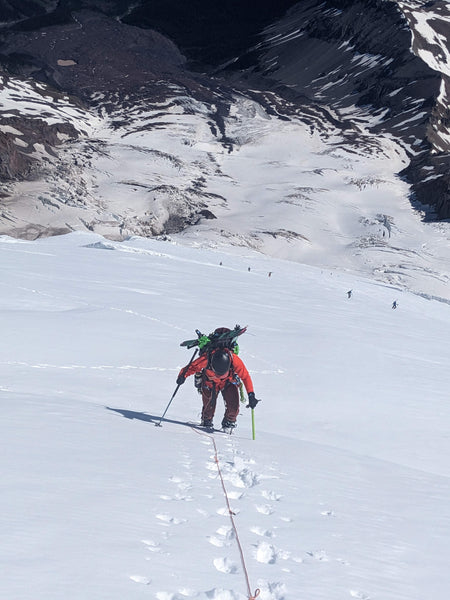
Given the amplifying information, we quickly pivoted, adjusted our permit, and made a 2-hour drive circumnavigating the mountain to the northern aspect. Our new plan was to now attempt a summit and ski descent of the Emmons Glacier, the largest surface area glacier in the contiguous US. The first 3 miles of the route up was completely melted out, meaning trail runners were on the feet and skis were on our packs. After reaching the Glacier Basin snowfields, we finally were able to start skinning. Low visibility kept us protected from the sun but added complexity to navigation. Thankfully, the Glacier Basin to Inter Glacier route wasn’t very open up with crevasses, making for a relatively straightforward path to Camp Schurman at 9,500 ft. We were welcomed to high camp with a break in the cloud coverage and a phenomenal sunset to admire while setting up our shelter. A waist-high rock wall and tethered tarp would serve as our home for the night before an alpine start for the summit.
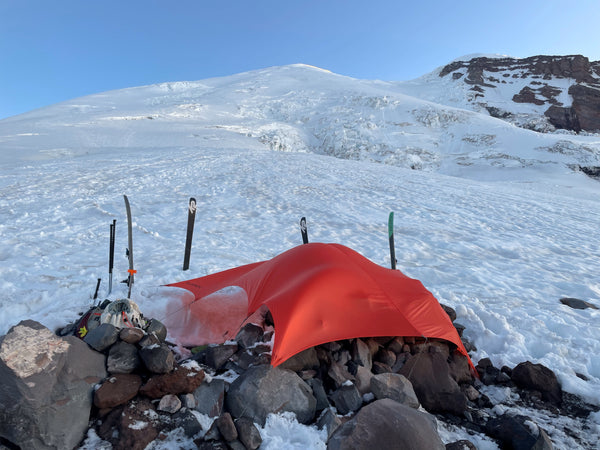
We got some last-minute beta from the climbing rangers at camp before roping up and starting the last leg of our ascent. If the sunset from the night prior wasn’t fulfilling enough, the sunrise that morning certainly covered any remaining sun-peeping desires. Minimal wind, reasonable temperatures, and crystal-clear visibility made for incredible climbing conditions. Some careful navigation around open crevasses provided an incredible perspective on the sheer magnitude of these glaciers. Recreating these perennial accumulations of crystalline ice is always a very humbling and somewhat mystic experience. Our long and arduous climb was finally met with the crater rim, and just to the far west side laid a small convexity that marks the summit of Tahoma.
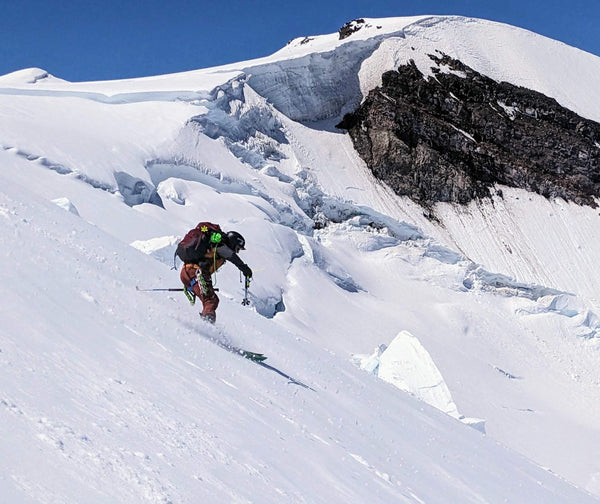
At the summit, we took a moment to catch our breath, replenish food and drink, and admire our accomplishments. After appreciating the views, it was time for the best part, the ski down! Typically, the first few hundred feet of ski descents on the volcanoes of Washington entail a lot of survival-type skiing on very weather-exposed snow surfaces. However, we were pleasantly surprised with some phenomenal corn skiing right from the start. We would ski one at a time for about 100 yards or so, soak in the views and the experience, reroute, and then continue to work our way down. We continued to rip some quintessential corn snow all the way back down to our camp.
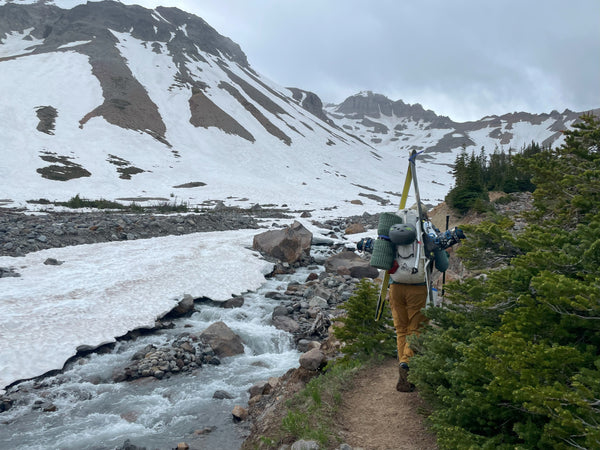
After packing up our shelter and tightening up our packs one last time, we got to enjoy some softer and heavier turns through the Inter Glacier and Glacier Basin back to where we stowed our trail runners. We strapped our skis back onto our packs and had one last jaunt down the trail to our car at the White River campground. After all was said and done, we covered just over 10,000’ during our overnight ascent. A safe return home, a successful summit, incredible views, and phenomenal corn skiing all with a great friend…it’s hard to really ask for much else.

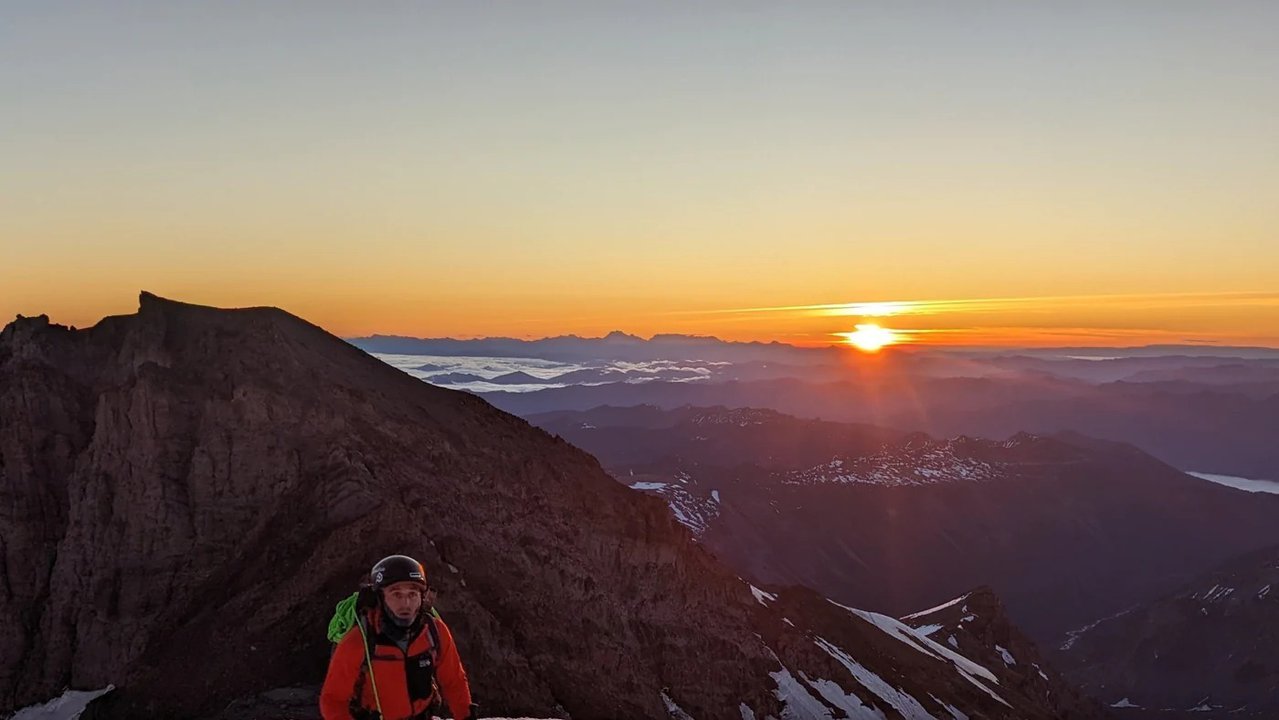
Comments